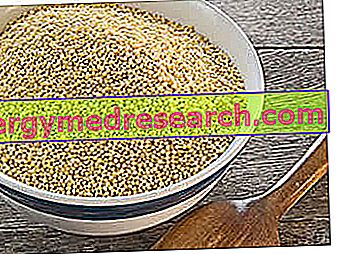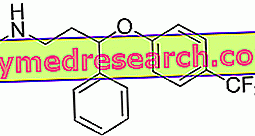"Miglio" is the name of a cereal hypothetically originating in Asia. In common language, it embraces various Species belonging to the Poaceae family ( Gramineae ); those used for avian feeding are mainly the Panicum miliaceum and the Setaria italica ; then there are the Indian millet or Eleusine coracana and the African melega millet or Holcus sorghum .

Its cultivation has no particular need for soil or irrigation but always requires a warm temperate climate. In Italy, millet is part of the so-called minor cereals and its crops are limited to certain areas of southern Italy (where it is called Volpioca). On the contrary, it is produced in abundance both in Asia and in Africa.
Millet flour
It is said that millet destined for human consumption ( Panicum miliaceum ) has several noteworthy nutritional properties; the resulting flour is mainly used in a mixture with wheat powder for baking, while the pure one is essentially used for the formulation of dry biscuits.
Millet is picked before it is completely ripe and "should" be ground only before consumption. This clarification is fundamental, since its abundant lipid content (contained in the germ) significantly limits its conservation. Millet flour is therefore an integral product, obtained by grinding whole seeds, only partially sifted to eliminate impurities.
To tell the truth, on the market there are products named in a rather different way (generally of the BIO type), but always having a higher cost than wheat flours (about 3.30 € / kg). In fact, we should ask ourselves why the production of a minor cereal, not very valuable and that does not require special treatments (irrigation or fertilization), reaches the retailer with a high cost instead of a low cost; but let's move on.
Some companies offer whole millet flour, others hulled millet flour.
Organic millet flour (dehulled)
| Average nutritional values per 100g of Product | |
| Energy value (Kcal) | 359 |
| Proteins (g) | 9.9 |
| Carbohydrates (g) | 73 |
| Fats (g) | 2.8 |
Organic Integral Millet Flour (partially sifted)
| FEATURES | VALUE | TOLERANCE | A. MEASURE | RIF / PAR |
| Humidity | 13, 50 | % | ||
| Protene (Nx 5.70) | 9.5 | % | ||
| Gluten | ABSENT | |||
| Power | 354 kcal - KJ 1481 | |||
| Carbohydrates | 80g | |||
| Grassi | 3.4 g | |||
| Protein | 13g | |||
| fibers | 2.7g | |||
As can be seen, the values reported are not identical but not even totally discrepant.
The nutritional properties of millet are the same as in most cereals. Despite being decanted as a qualitatively "excellent" food, millet contains about the same chemical values as wheat; rather! In the second table, despite translating for a whole millet flour, there is a fiber content similar to that of a type 00 soft wheat flour (therefore refined). Obviously, the accuracy in calculating the nutritional content of these products is not the best.
According to other sources, the contribution of mineral salts "should" be appreciable due to the good content of iron and potassium, while that of vitamins "could" boast discrete concentrations of thiamine (vit. B1) and niacin (vit. PP).
It should also be noted that, although it is a flour obtained from a gluten-free cereal, most companies produce it in the same plant where gluten-free cereals are processed. This means that these millet flours are contaminated and no longer suitable for celiac disease.



